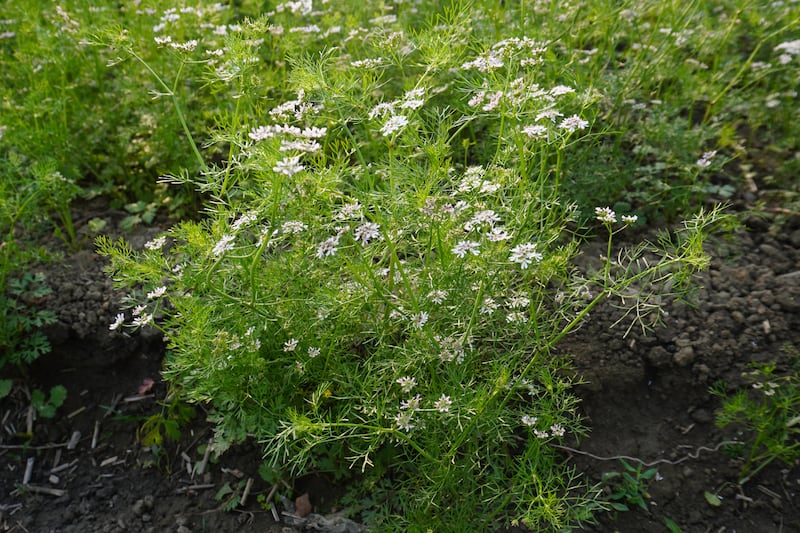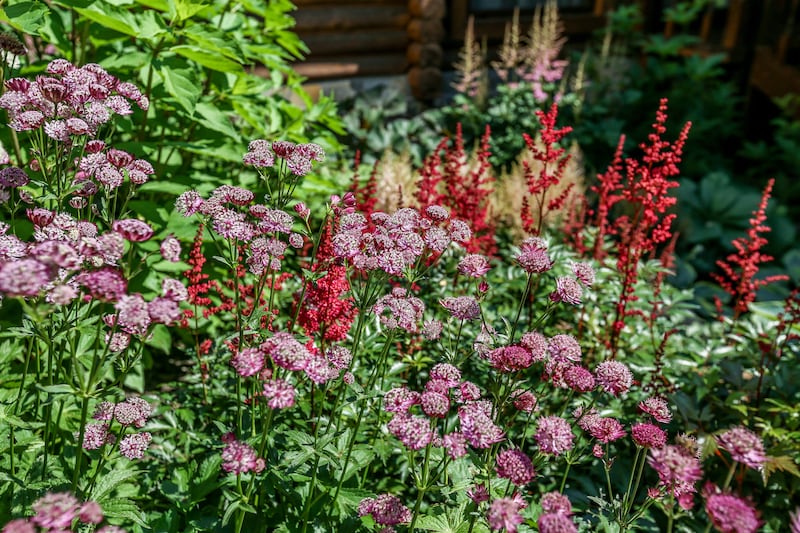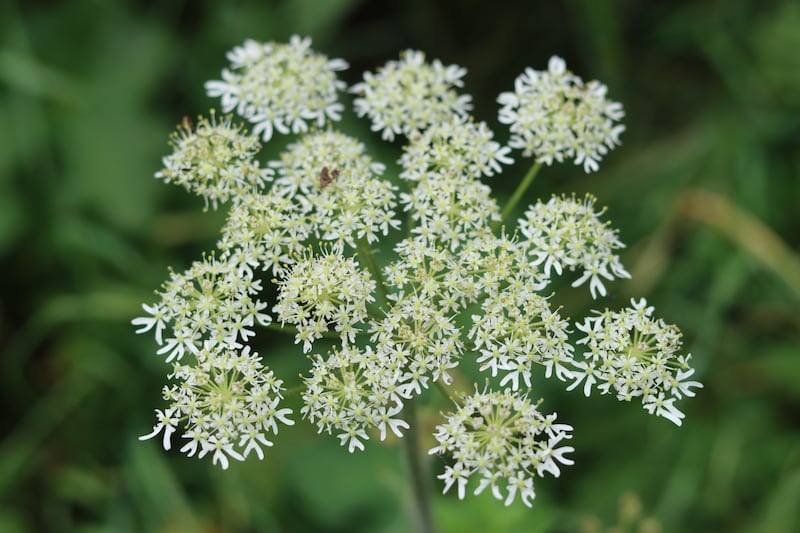Some plants have an uncanny ability to add contemporary elegance to a garden, magically leavening the visual weightiness of trees, shrubs and more traditional perennials with the airy grace of their growth habit and flowers. Umbellifers are without equal in this regard. Threaded through an otherwise conventional mixed border, or used in a gravel garden, or a display of summer pots, they quickly transform any outdoor space in a way that feels distinctly modern.
Part of the reason for this is their umbel-shaped flowers, which are similar to those of some of our loveliest and best-known wildflowers, such as cow parsley, hedge parsley, alexanders, pignut and wild carrot. Each umbel – technically known as a “compound inflorescence” – is a thing of precise geometric beauty made up of a series of umbellets that radiate out from its centre, with each umbellet typically comprising a number of tiny flowers.
But it’s not just their good looks that earns them a place in many gardens. Umbellifers’ nectar and pollen-rich, umbrella-shaped, decorative blooms are also famously attractive to a diverse range of pollinating insects.
Yet another part of their great charm is that long after they have faded, the handsome silhouettes of those distinctive flowers can continue to provide long-lasting interest right until the first harsh frosts, while their often tall, hollow, grooved stems offer a safe berth for beneficial garden insects to overwinter.


All are members of what was long known as the Umbelliferae plant family but is now classed as Apiaceae. This huge group includes well-known garden favourites such as fennel, dill, lovage, coriander, celery, culinary parsley, angelica, ammi, bupleurum, astrantia and orlaya, as well as other lesser-known but equally graceful umbelliferous species. Examples of the latter include the pink-flowering Pimpinella major ‘Rosea’; Baltic parsley (Cenolophium denudatum); the towering, yellow-flowered giant fennel (Ferula communis); the stately Himalayan cow parsley (Selinum wallichianum); the statuesque, lime-flowered Peucedanum verticillare; and the lilac-pink flowering hairy chervil (Chaerophyllum hirsutum ‘Roseum’).


These plants, often used in naturalistic planting combinations, have become the hallmark of a now established style of gardening that’s less strait-laced and more in tune with the planet.
Some, it should be said, are easier to grow than others. For example, the exquisite Bupleurum longifolium ‘Bronze Beauty’, a sun-loving perennial prized for its intricately beautiful flowers that look as if they were dusted in powdered gold, is notoriously short-lived as well as challenging to raise from seed (the latter must be sown fresh and exposed to cold winter temperatures). Meanwhile, fashionable annual and biennial umbellifers such as Orlaya grandiflora and ornamental carrot (Daucus carota), loved equally by gardeners and florists, can frustratingly fall victim to carrot fly.
Others, such as dill and common fennel, can become invasive when growing conditions are too much to their liking, self-seeding themselves around the place with abundance, or in the case of sweet cicely (Myrrhis odorata), also spreading via their very vigorous root systems.
Another case in point is the famously persistent perennial weed known as ground elder (Aegopodium podagraria), originally introduced as a medicinal herb used to treat gout before its unwelcome ability to rapidly colonise large areas of ground was recognised. That said, there’s no denying the graceful beauty of its pale umbelliferous flowers, while it’s also quite delicious fried in butter and garlic.
[ How to make the best of light and shade in your gardenOpens in new window ]
I should add another word of warning when it comes to this group of plants, which is to be ultra wary of those wild umbelliferous species that pose a risk to human health. Chief among them is giant hogweed, Heraclium mantegazzianum, a non-native perennial now naturalised through large parts of Ireland and found growing in damp ditches, woodland edges and along riversides.
Originally introduced as a garden ornamental – a cautionary tale if ever there was one – it’s what’s known as a phytotoxic species, where a combination of exposure to bright sunlight and direct contact with its sap quickly results in very painful blistering and then scarring of the skin. While easy to identify at this time of year when its lofty flower stems can reach a height of 5m, that task is more challenging when it’s in its earlier stages of growth, making accidental injury more of a risk.
Others, such as hemlock (Conium maculatum), hemlock water-dropwort (Oenanthe crocata), fool’s parsley (Aethusa cynapium) and lesser water parsnip (Berula erecta) are poisonous both to humans and animals (the Greek philosopher Socrates famously died of poisoning by drinking hemlock tea). Great care should be taken not to confuse them if foraging for other edible umbelliferous species such as alexanders (Smyrnium olusatrum) and wild angelica (Angelic sylvestris).
On the other hand, and as mentioned above, many of our kitchen garden favourites are also umbellifers. If you’ve ever let parsley, parsnip, coriander, celery or carrot go to seed rather than harvesting them, for example, then you’ve probably been both charmed and surprised by the beauty of their pollinator-friendly flowers, proof that they can be every bit as decorative and beneficial to nature as they are useful.
This week in the garden
Preserve the flavour of fresh garden-grown herbs for use later in the year by drying tied bunches in a cool, dry room, freezing the chopped leaves in ice cubes, or adding some sprigs of leaves to small, sealed bottles or jars of olive oil.
The last of the summer bedding plants are often for sale at bargain prices in garden centres and supermarkets at this time of year. Most are tired and badly rootbound by now, while time is rapidly running out for them to make enough fresh growth to give impact. But if you can’t resist the temptation, then give them a fighting chance by cutting back all faded flower stems, gently loosening their root-balls and thoroughly soaking the latter in a solution of liquid seaweed before planting them into weed-free, friable, fertile ground, or a container filled with a very good quality compost. Take precautions against slugs and snails.
Dates for your diary
A Fiesta of Dahlias June Blake’s garden, Tinode, Blessington, Co Wicklow, every Saturday and Sunday in July from 2pm. A celebration of this remarkable genus of plants with free workshops, expert talks, plus tours of the garden. juneblake.ie
Carlow Garden Festival 2025 Saturday, July 26th to Sunday, August 3rd, with expert guest speakers including Financial Times gardening correspondent and author, Robin Lane Fox (Huntington Castle, August 2nd); author and head gardener of Kilmacurragh, Seamus O’Brien (Burtown House, July 30th); British garden designer Sarah Eberle (Borris House, July 31st); organic kitchen gardener Tanguy de Toulgoët (Shankill Castle, July 30th); and Peter O’Mahony in conversation with Adam Frost (Arboretum Garden Centre, Leighlinbridge, July 26th), booking essential. carlowgardentrail.com.















